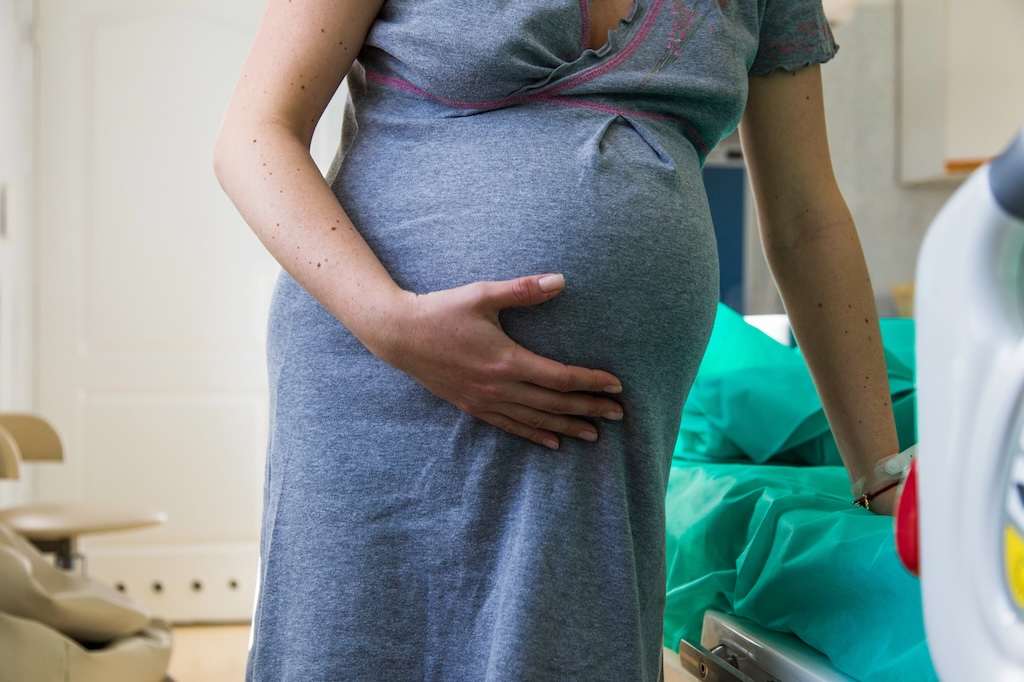SingaporeMotherhood | Pregnancy
June 2025

Your EDD (estimated delivery date) is drawing near, and you’re probably eagerly anticipating the arrival of your bundle of joy. If you are a new mum-to-be, knowing what you will go through in the final weeks of pregnancy, the various methods of pain relief available, and what other mums-to-be have gone through during labour can help you to approach delivery day with greater confidence. That’s why we’ve put together this quick lowdown on what to expect when you’re expecting D-Day. Here’s to a smooth labour and delivery for you, and your little one.
(See also: 10 THINGS TO DO BEFORE YOUR BABY IS BORN)
Towards the end of most pregnancies, the baby’s head engages with the mother’s pelvic bone in preparation for birth. In a first-time pregnancy, this may occur as early as the 36th week of gestation. “I was 37 weeks pregnant when I felt a sharp pain in my right hip while walking. It felt as though my pubic bone was being forced apart. My son was born a week later,” shares Mrs B.C. Goh, a 33-year old consultant.
As the body ‘practises’ for labour, you may experience painless and irregular Braxton-Hicks contractions. This can come as early as the 30th week of pregnancy. Closer to your delivery date, you may also experience false labour. This is characterised by strong and painful contractions that last less than 45 seconds each. However, unlike during real labour, where contractions increase in frequency and magnitude of pain, false labour contractions are irregular.

Towards the end of pregnancy, you may pass out a mucus plug — a mucus-like substance mixed with old, brown blood. This does not indicate impending labour. A clearer indication that labour has begun is the ‘show’ of a small amount of fresh blood, caused by the stretching and dilation of the cervix.
One sure sign that your baby is on the way is when your water bag bursts. In 15 per cent of women, this occurs before labour has begun. For most women however, the water bag ruptures towards the end of the first stage of labour. When this happens, you may either feel a gush of amniotic fluid, or just a continuous trickle. If contractions do not begin within 24 hours of your water bag breaking, consult your gynaecologist, as your baby will be exposed to a greater risk of infection.
In preparation for delivery, the uterus contracts with increasing intensity as the cervix thins and begins to dilate. These contractions feel like strong menstrual cramps, and the interval between the start of each contraction will reduce from 10 minutes to five, and then two minutes. Unlike false labour, which only causes pain in your lower abdomen, you may also feel pain in your lower back when you are truly in labour.
(See also: GIVING BIRTH? WHAT SHOULD YOU PACK IN YOUR HOSPITAL DELIVERY BAG?)

After reaching the 40th week of pregnancy, some mothers who are anxious to ‘pop’ may attempt to trigger the onset of labour by eating spicy food. However, this method does not have official medical approval so try it in moderation if you do! Instead, take long walks. This may help your baby to shift lower into the pelvis, exert greater pressure on the cervix, and stimulate contractions.
As your pregnancy approaches or passes the 40th week, the placenta does not function as effectively as before. Because this can adversely affect the transfer of oxygen and nutrients to the baby, Ms. M. S. Ang, 37, chose to induce labour for her first two pregnancies at 37 and 38 weeks, respectively. This involved inserting prostaglandin tablets into the vagina to stimulate contractions. The homemaker shares, “My water bag burst naturally after the contractions started.”

It’s “like a jackhammer ramming down my pubic bone” described Ms. S. Phua, 34, of labour pain. Fortunately, there are pain relief techniques which can help you to manage the pain, or block it out completely.
(See also: YOUR ULTIMATE GUIDE TO LABOUR PAIN RELIEF. READ THIS BEFORE YOU GIVE BIRTH)
In the early stage of labour, getting back massages or using a TENS (Transcutaneous Electrical Nerve Stimulation) machine can help release tension. Both stimulate the production of endorphins, which are the body’s natural painkillers.
Deep breathing techniques and correct positioning can also help you to manage the pain during the first stage of labour, while short, rhythmic breaths coupled with pushing during each contraction helps the second stage of labour to progress.
Sitting in a warm bath can also help to relax muscles. In addition, water buoyancy helps to support the heavy tummy and relieve pressure on the pelvis. If you choose to do this, ensure that your water bag has not burst, and that you have medical personnel with you to monitor your progress.

As labour progresses, you may feel the need for some form of analgesic drugs. Mothers are usually first given Entonox (nitrous oxide) to dull the pain. This gas is inhaled through a mask at the start of a contraction and it does not result in any side effects to the baby. You can also control the amount of gas you inhale.
However, nitrous oxide, which is also known as “laughing gas”, can make you light-headed. “I started to laugh till I cried after every breath of gas. After several attempts — with little relief to my pain — I decided that I could not laugh through my entire labour, and opted for an epidural,” one mother recalls.
Another mum, who delivered her elder child in Brunei, was offered Pethidine, administered via an injection in her thigh. She found this ineffective as “it made me sleepy, but the pain still shot up during each contraction”. Unlike Entonox, Pethidine can cross the placenta into the baby. This causes the baby to become sedated and makes it difficult to monitor the baby’s well-being.

An epidural block is probably the most effective method of pain relief. However many mothers hesitate to try this because the anaesthetic is injected into the epidural space found within the spine. Fear of the needle accidentally piercing the spinal cord, or the possible side effects such as headaches, backaches and nausea are common reasons why some mothers consider epidural only when all else fails.
A mum shared that “a friend also advised me to get an epidural early — before the labour pains become unbearable — as I would not be able to stay still for the injection to be administered then. It also takes time for the drug to take effect. I took her advice and had an almost painless labour. However, I vomited seven times during and after the labour. The numbing of my lower body also resulted in me being unable to push my baby out effectively, and the nurses had to press my tummy during each contraction.”
While most mothers would like to have a natural birth, certain deliveries may require medical assistance. It is important to trust your gynaecologist’s professional judgement and not resist medical intervention if you require it.

M.S. Ang, 37, mother of four children aged 13, 10 and 5 (twins), opted for a Caesarean section as one of her twins was in a breech position. “I was unsure of what to expect if I delivered them naturally. I had labour pains in the 34th week of pregnancy, and had a C-section under general anaesthesia. My twins were delivered safely,” she shares.
“The day before delivering my second child, I already felt the baby’s pressure going downwards and had a show the same morning. Sure enough the following night, I had regular contractions initially at 20 minutes apart and then at 10 minutes apart with bleeding — a sure sign that I needed to get to the hospital,” recounts S. Phua, 34, mother of two children, aged 5 and 1½.
“Towards the end of my four-hour labour, I was told that my baby’s heartbeat had stopped momentarily. A vacuum extractor was applied to my son’s head to help him out more quickly. I didn’t panic as I trusted the medical team, and my son is alive and well today.”
(See also: PROLONGED LABOUR: WHEN BABY TAKES TOO LONG TO BE BORN)
Ready for D (Delivery) -Day?
Whatever your delivery experience may be, stay positive, knowing that each stage brings your little one closer to your loving arms!
All images: Depositphotos
All content from this article, including images, cannot be reproduced without credits or written permission from SingaporeMotherhood.
Follow us on Facebook, Instagram, and Telegram for the latest article and promotion updates.











